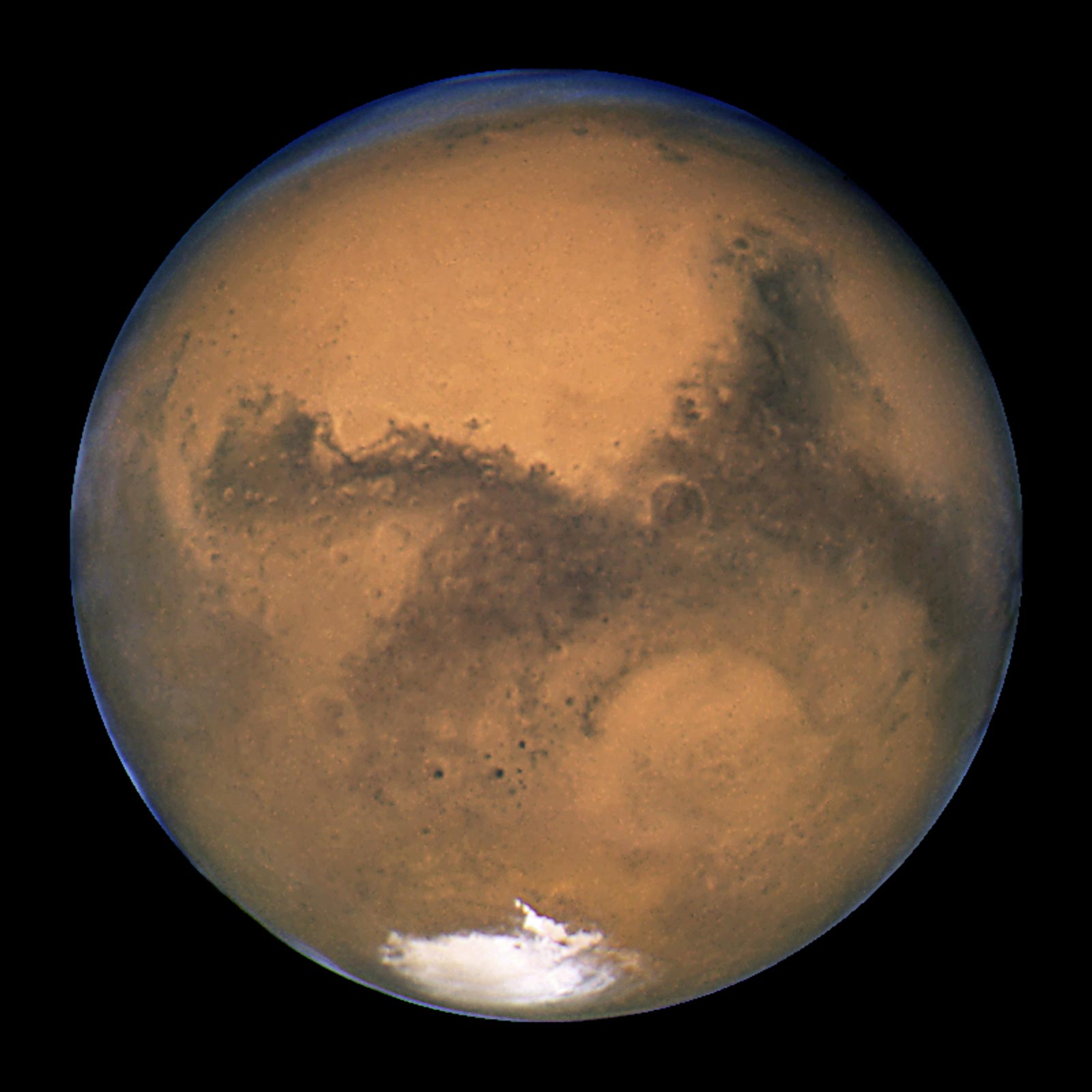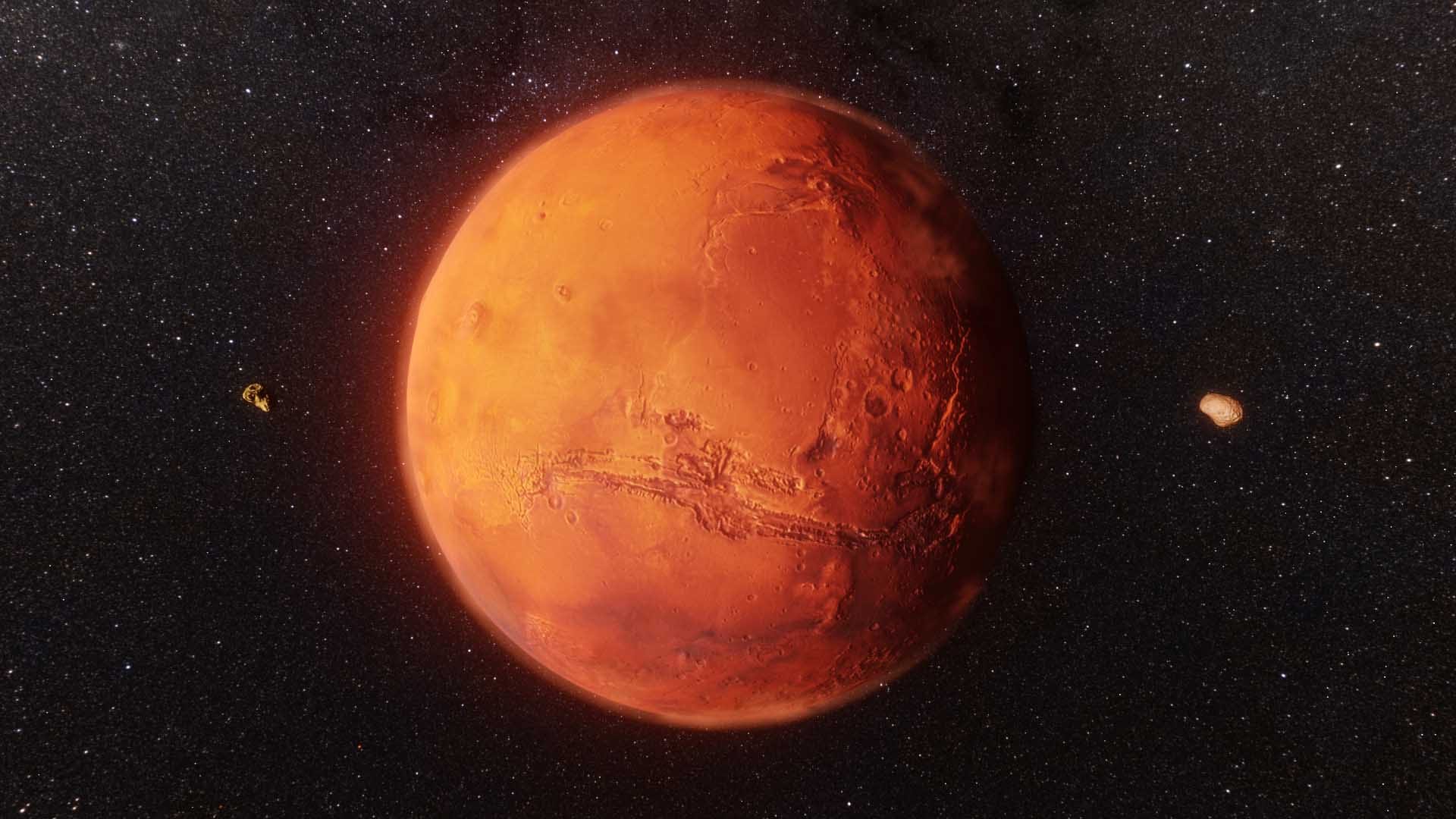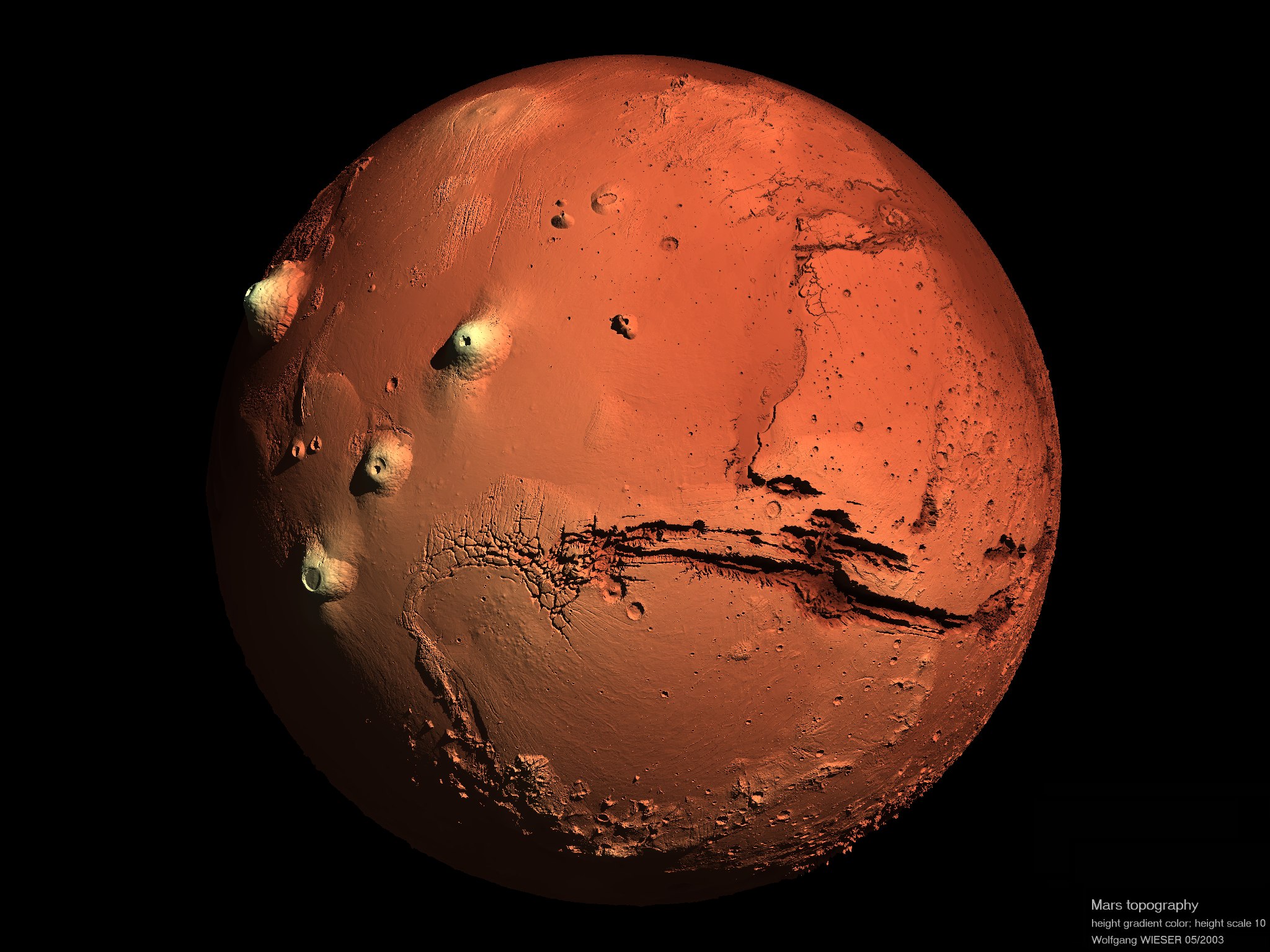Have you ever gazed up at the night sky and wondered about the far-off worlds that share our cosmic neighborhood? It’s a pretty amazing thought, isn't it? Our solar system, you see, is a vast and truly wonderful place, filled with all sorts of celestial bodies. Among them are two planets that, while very different in their physical makeup and distance from us, somehow spark our imagination and curiosity in unique ways. We’re talking about Mars and Neptune, two fascinating planets that, in a way, invite us to look beyond what we know.
Mars, often called the "Red Planet," has been a focus of human exploration for quite some time, and it’s actually pretty easy to spot in the night sky. Neptune, on the other hand, is much further out, a distant, icy giant. Yet, despite their vast separation and distinct characteristics, these two planets hold a special kind of connection, especially when we consider how their energies might intertwine, perhaps in the study of astrology. It’s a curious thought, how these far-off places can mean something to us down here.
This article will take a closer look at both Mars and Neptune, pulling details from what we know about them through space exploration and how they are seen in astrological contexts. We’ll explore the physical facts of these worlds, from Mars’s rusty surface to Neptune’s distant orbit, and then consider what it might mean when their influences meet in a personal chart. It's a way, you know, to connect the grand scale of the cosmos with our own experiences.
Table of Contents
- The Red Planet Mars: A Closer Look
- Neptune: The Distant Giant
- Mars and Neptune in Astrology: Energies Intertwined
- Frequently Asked Questions About Mars and Neptune
- Connecting the Cosmos to Our Lives
The Red Planet Mars: A Closer Look
Mars, the fourth planet from the sun, is quite a sight in the night sky. It often appears as a reddish object, which is why it earned its famous nickname, the "Red Planet." This color, you see, comes from its rusty red surface, which, in its own way, tells a story of destruction over vast spans of time. It’s pretty striking, actually, how a planet can carry such a visual narrative.
Mars in Our Solar System
Our solar system, as you might know, is a busy place, made up of a star—the sun—eight planets, and a whole bunch of other things like moons, comets, asteroids, and even some dwarf planets, like Pluto. Mars holds a specific spot within this grand arrangement. It’s the fourth planet from the sun, making it one of Earth's two closest planetary neighbors; Venus is the other one. In terms of size and mass, Mars is the seventh largest, and it's also the second smallest planet in the solar system overall. So, it's not a huge world, but it’s still very significant to us.
This planet, Mars, formed together with the other solar system planets, you know, about 4.5 billion years ago. It was a time when a giant cloud of interstellar gas and dust collapsed under its own gravity, flattening into what would become our solar system. That’s a truly ancient history, to be sure. The red planet Mars, named for the Roman god of war, has long been an omen in the night sky, and that name, too, seems to fit its appearance.
Exploring Mars with Probes
Humanity has been sending robotic explorers to Mars for a while now. Probes, actually, have been active on Mars continuously since 1997. It’s pretty incredible when you think about it. At times, more than ten probes have simultaneously operated in orbit or on the surface of Mars, which is more than at any other planet beside Earth. This sustained effort really shows our deep interest in this particular world. For instance, just this week, NASA marks the 13th anniversary of the landing of its Curiosity rover on the surface of Mars. Curiosity has now driven more than 22 miles across the cold and dry Martian landscape, gathering all sorts of information for us. It’s quite a journey for a robot, isn't it?
The Dynamic Nature of Mars
Mars is a very dynamic planet, which might surprise some people. It has seasons, just like Earth, and it also features polar ice caps, which grow and shrink with those seasons. Beyond that, the planet boasts extinct volcanoes and vast canyons, showing a history of geological activity. These features paint a picture of a world that, while now cold and dry, was once perhaps much more active. It’s a place that definitely keeps scientists busy trying to figure out its past and what it means for the possibility of life, perhaps even in its ancient history. The more we learn, the more intriguing Mars becomes, you know?
Neptune: The Distant Giant
Moving much, much further out into the solar system, we find Neptune. This planet is a very different kind of world compared to Mars. It’s an ice giant, a colossal sphere of gas and ice, and it holds the record for being the most distant planet from our sun. Its discovery in 1846 was a pretty big deal, marking a new chapter in our understanding of the solar system’s outer reaches. Neptune, you see, truly sits on the edge of our planetary neighborhood.
Neptune's Place in the Solar System
Neptune is the eighth planet from the sun, which means it’s quite a long way out there. It’s one of the eight planets that orbit our sun, listed in order of closeness: Mercury, Venus, Earth, Mars, Jupiter, Saturn, Uranus, and then Neptune. This distant world also has its own family of moons; it has 16 known moons, which is quite a collection. It’s a pretty busy system, even way out there. So, it’s not just a lone planet, but a system within itself, really.
The Vast Distances of Our Solar System
The distances between the planets in our solar system are truly enormous, and they are always changing because each planet is in its own orbit revolution. For instance, the distance between Neptune and Mercury is a staggering 29.70 AU. To put that into more familiar terms, that’s around 4,443,090,000 kilometers, or about 2,760,936,126 miles. That’s a truly vast stretch of space, isn’t it? These immense distances really highlight the scale of our cosmic home, and how far apart Mars and Neptune actually are from each other.
Mars and Neptune in Astrology: Energies Intertwined
Beyond their physical characteristics and scientific exploration, Mars and Neptune also hold significant meaning in the world of astrology. Here, these planets aren't just celestial bodies; they represent energies and influences that can shape our personalities and experiences. It’s a way, you know, to look at the cosmos and see reflections of ourselves. When we talk about "Mars and Neptune aspects in the birth chart," we're considering how the raw drive of Mars interacts with the dreamy, spiritual, and sometimes confusing nature of Neptune. This can really show us if there's clarity or confusion in the direction our energy should go.
Understanding Planetary Aspects
In astrology, planets form "aspects" when they are at certain angular relationships to each other in a birth chart. These aspects indicate how the energies of those planets blend or clash. For instance, a "conjunction" means they are very close together, blending their energies strongly. A "square" means they are at a 90-degree angle, which often suggests tension or challenges. These relationships are quite important, you see, for understanding how different parts of our nature might interact.
Mars Square Neptune: Unraveling the Challenges
When Mars and Neptune form a square aspect in a natal chart, it can point to a potential for many difficult situations. How likely these situations really are, though, depends a lot on the rest of the chart. This aspect can sometimes create a sense of confusion about where to direct one's energy, or a feeling of being drained. It can be a challenge to take clear, decisive action when Neptune's often murky influence meets Mars's drive. This particular aspect affects both natal charts, which are like a snapshot of the sky at your birth, and transit charts, which show current planetary movements. So, it’s a dynamic influence, really, that can play out over time.
Mars Conjunct Neptune: Dreams in Action
On the other hand, when Neptune conjuncts Mars in a natal chart, it suggests a different kind of energy. Thanks to this alignment, individuals may find themselves fighting for their dreams, beliefs, and ideals with great clarity and conviction. There's a strong desire to penetrate what's murky around them, bringing light to unclear situations. Those born with "Mars conjunct Neptune dreams in action" may also experience heightened intuition and a deeper sense of empathy towards others. This combination of planetary influences can bring about significant emotional and spiritual growth for those who have it. It’s a powerful blend, you know, that really combines drive with a spiritual awareness.
This "Mars conjunct square opposition Neptune" configuration suggests that effective action can be taken through inspiration and creative visualization. It’s a way of channeling that intense energy into something meaningful. This specific aspect can bring both gifts and challenges, showing a powerful and complex dynamic. In a way, it’s about finding the right outlet for one's drive, guided by a deeper sense of purpose.
Synastry and the Connection Between People
When we look at "Mars conjunct Neptune synastry," we are exploring how this intense astrological aspect plays out between two people's charts. This can create powerful and complex dynamics in relationships. It’s about how one person's drive and assertiveness (Mars) interacts with another's sensitivity and idealism (Neptune). This can lead to both positive and negative effects, depending on how the energies are managed. It’s a very deep connection, really, that can sometimes feel almost fated.
The Quest for Security
In some astrological configurations involving Neptune, the primary motivation can be a deep need for security. This isn't always directly tied to Mars, but Neptune's influence often brings a search for something stable and safe amidst its often ethereal or confusing nature. So, when Mars's drive for action meets Neptune's quest for something solid to believe in, it can shape how a person pursues their sense of safety and belonging. It's a subtle but powerful undercurrent, you know, in how these planetary energies play out.
Frequently Asked Questions About Mars and Neptune
People often have questions about these fascinating planets, both in space and in their charts. Here are a few common ones:
What is the distance between Mars and Neptune?
The distance between Mars and Neptune changes quite a bit because both planets are constantly moving in their orbits around the sun. At their closest approach, they would still be incredibly far apart, and at their furthest, the distance is truly immense, as Neptune is the most distant planet in our solar system. The distance among each of the eight planets in our solar system will alter depending on where each planet is in its orbit revolution. So, it's not a fixed number, but a constantly changing measurement.
What does Mars square Neptune mean in a natal chart?
In a natal chart, Mars square Neptune indicates a potential for many difficult situations. This aspect can suggest challenges in directing one's energy clearly, or a tendency towards confusion, perhaps even self-deception, when it comes to taking action. However, how likely these difficulties truly manifest depends on the rest of the individual's birth chart. It's a complex interaction, you know, that needs to be looked at in context.
How does Mars conjunct Neptune affect someone's personality?
Those born with Mars conjunct Neptune may experience heightened intuition and a strong sense of empathy towards others. This combination can lead to a powerful drive to fight for their dreams, beliefs, and ideals with conviction. It can also bring about significant emotional and spiritual growth, as the active energy of Mars blends with Neptune's more spiritual and compassionate influence. It’s a very powerful combination, really, that can inspire deep purpose.
Connecting the Cosmos to Our Lives
From the rusty, war-god-named Mars, where probes have been active continuously since 1997, to the far-flung, enigmatic Neptune, discovered in 1846 with its 16 known moons, our solar system is full of wonders. These planets, whether we study them through telescopes and rovers or through the symbolic language of astrology, offer us different ways to understand our place in the universe. The Curiosity rover, for instance, has driven more than 22 miles across Mars, gathering data that helps us learn more about that dynamic planet with its seasons and polar ice caps. It’s quite a journey, you know, both for the robot and for our collective knowledge.
Whether you're looking at the actual distances between planets, like the vast gap between Neptune and Mercury, or considering the influence of a Mars conjunct Neptune aspect in a birth chart, there's a lot to ponder. The primary motivation of some planetary configurations, such as the need for security, can be seen when we consider how these cosmic energies play out in our lives. It reminds us that our driving force, which includes our motivations and actions, is influenced by so many things, both seen and unseen. Learn more about planetary influences on our site, and perhaps you'll want to explore this page about the history of space exploration, too. It’s all connected, really, the vastness of space and the intricacies of our own being.



Detail Author:
- Name : Amari Pacocha
- Username : sister.balistreri
- Email : judy.boehm@hotmail.com
- Birthdate : 1997-02-05
- Address : 66165 Legros Square Kulasborough, CO 19291-7979
- Phone : +13613789210
- Company : Powlowski LLC
- Job : Accountant
- Bio : Rem commodi iusto iure et corporis sunt earum. Sit illum labore facilis autem. Quasi est tempora unde sapiente modi.
Socials
tiktok:
- url : https://tiktok.com/@fkerluke
- username : fkerluke
- bio : Asperiores delectus est voluptas nulla.
- followers : 1586
- following : 2205
facebook:
- url : https://facebook.com/francescakerluke
- username : francescakerluke
- bio : In temporibus ipsa ea facilis eum et repellendus.
- followers : 5284
- following : 594